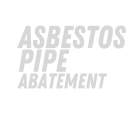Assessing the damage to pipeline easements involves evaluating the condition of the land and infrastructure associated with the pipeline corridor. When damage occurs, whether due to natural causes, construction activities, or other factors, a thorough damage assessment is crucial.
An easement in essence is a legal entitlement that grants an individual the privilege to utilize someone else’s property for a specific intent. A pipeline easement, in particular, confers upon the easement holder the authority to establish and uphold a pipeline on a landowner’s premises. However, this arrangement doesn’t confer actual land ownership upon the easement holder; it solely imparts the right to use the land exclusively for pipeline-related activities. This easement is “attached” to the land, implying that it endures with the property and applies to all forthcoming property proprietors. To formalize this agreement, a documented easement contract must be drafted, bearing the signature of the landowner, and subsequently filed with the local county recorder’s office.
Usually, a pipeline easement is of an enduring nature and lacks a predefined expiration date, although parties can opt for an easement that remains valid for a specific timeframe. The legal concept denoted by the term “right-of-way agreement” aligns with that of an easement.
When damages to the easement contract occur, there exist three distinct justifications for considering severance damages. These encompass:
- Alteration in the most optimal and productive use of the property.
- Elevated expenses or limitations imposed on current activities.
- Constraints imposed on potential future development or utilization.
The estimation of severance damages will be conducted by assessing projected remedial expenses.
When damages to the easement itself occur, a pipeline integrity check needs to look for signs of corrosion, leaks, or structural damage. We assess any infrastructure built along the pipeline easement, such as access roads, bridges, culverts, and facilities. Then, we check for structural damage and functionality issues. We also evaluate the potential environmental impact of the damage, considering factors like soil erosion, contamination, impacts on local wildlife, and water sources which is crucial for regulatory compliance and environmental restoration efforts.
Thorough preliminary research and preparation stand as the optimal approach to guarantee the pipeline appraisal’s credibility and dependability. This involves giving sufficient attention from the outset, encompassing the identification of partial interests, scrutiny of language within the easement agreement, conducting an exhaustive search for the most pertinent comparable data, and comprehensive analysis. Conversely, when the assignment’s scope lacks clarity or is not adhered to appropriately, the resultant analysis and conclusions will be deceptive and untrustworthy.
Our team involves pipeline industry experts such as environmental consultants, geotechnical engineers, pipeline engineers, and legal advisors. We take in the complexity and extent of the damage to the pipeline easement, then we successfully quantify the extent of the damage in terms of financial cost, environmental impact, and safety risks. This information is essential for insurance claims, pipeline repair budgeting, and prioritizing pipeline restoration efforts.














